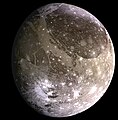Файл:The Galilean satellites (the four largest moons of Jupiter).tif

800 × 262 нокта - TIF файлын беренчел карау размеры JPG. Башка ачыклык: 320 × 105 нокта | 640 × 210 нокта.
Төп файл (1830 × 600 нокта, файл зурлыгы: 1,51 Мб, MIME төре: image/tiff)
Файл тарихы
Файлның нинди булганлыгын күрү өчен «дата/вакыт» дигәненә басыгыз.
| Дата/вакыт | Кече рәсем | Үлчәмнәре | Кулланучы | Искәрмә | |
|---|---|---|---|---|---|
| агымдагы | 29 дек 2011, 12:54 | 1830 × 600 (1,51 Мб) | Prof. Professorson | {{Information |Description=This composite includes the four largest moons of en:Jupiter which are known as the Galilean satellites. The Galilean satellites were first seen by the Italian astronomer en:Galileo Galilei in |
Файлны куллану
Әлеге файл киләсе битне куллана:
Файлның гомуми кулланышы
Әлеге файл аста бирелгән викиларда куллана:
- af.wikipedia.org проектында куллану
- als.wikipedia.org проектында куллану
- ar.wikipedia.org проектында куллану
- ast.wikipedia.org проектында куллану
- az.wikipedia.org проектында куллану
- ba.wikibooks.org проектында куллану
- be-tarask.wikipedia.org проектында куллану
- be.wikipedia.org проектында куллану
- bg.wikipedia.org проектында куллану
- bn.wikipedia.org проектында куллану
- bn.wikibooks.org проектында куллану
- bs.wikibooks.org проектында куллану
- ca.wikipedia.org проектында куллану
- cs.wikipedia.org проектында куллану
- en.wikipedia.org проектында куллану
- en.wikibooks.org проектында куллану
- es.wikipedia.org проектында куллану
- et.wikipedia.org проектында куллану
- eu.wikipedia.org проектында куллану
- fi.wikipedia.org проектында куллану
- fr.wikipedia.org проектында куллану
- gl.wikipedia.org проектында куллану
- he.wikipedia.org проектында куллану
- hi.wikipedia.org проектында куллану
- hu.wikipedia.org проектында куллану
- hy.wikipedia.org проектында куллану
- id.wikipedia.org проектында куллану
- it.wikipedia.org проектында куллану
- ja.wikipedia.org проектында куллану
- kk.wikipedia.org проектында куллану
- ko.wikipedia.org проектында куллану
Бу файлның гомуми кулланышын карау.





